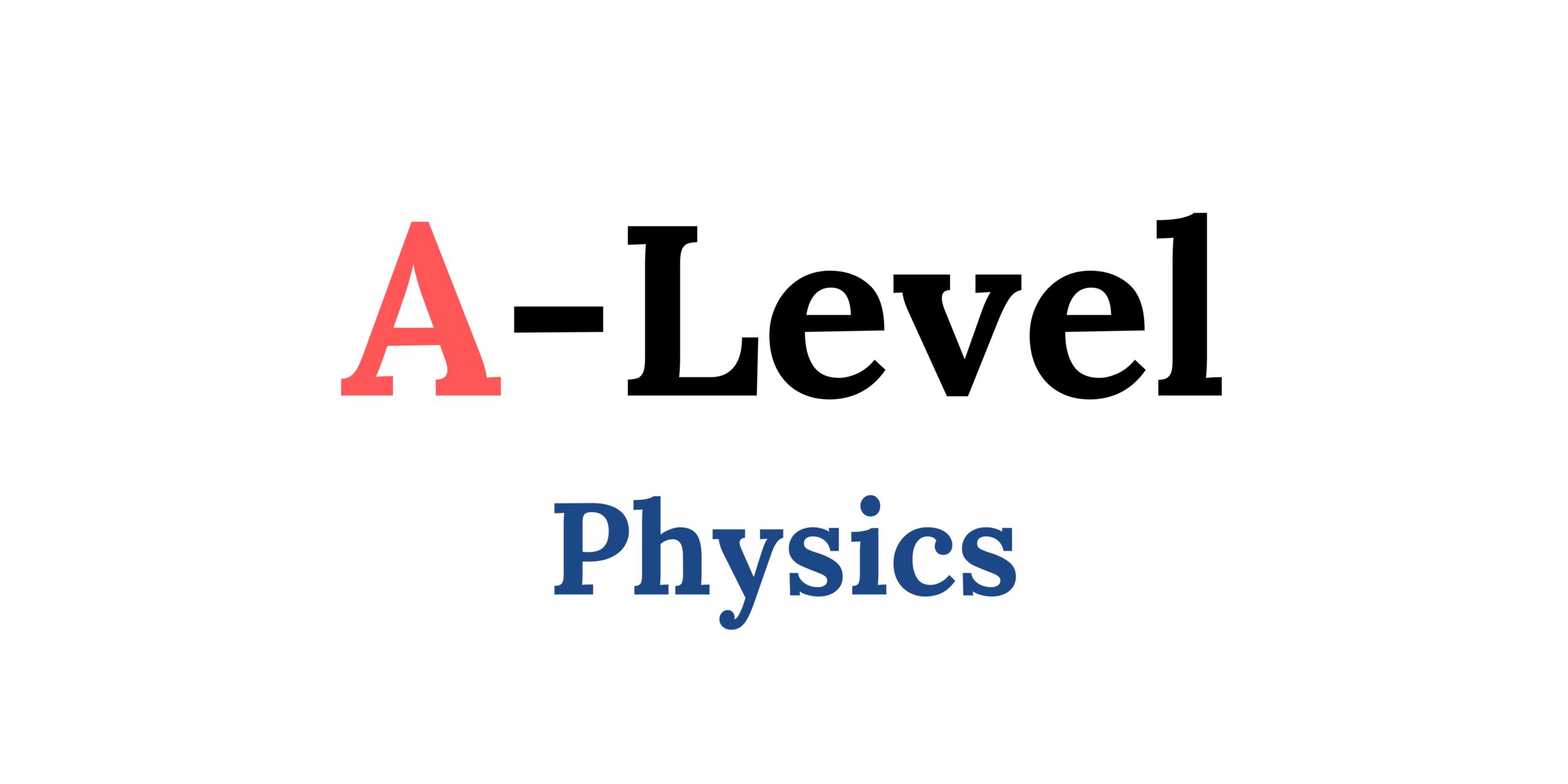
Strengthening Canada’s Bilingual Future: New Investments in Francophone Immigration
Canada’s bilingual identity is a key part of its heritage. Supporting French-speaking communities outside Quebec


Overview of AQA A-level Physics qualifications
Subject content:
Want to learn more about Advanced Level Qualifications (A-Levels) and how they can shape your academic future? Click here to explore: A-Level Information.
| Syllabus component | Content |
|---|---|
| 1.1. Use of SI units and their prefixes | • Fundamental (base) units: mass, length, time, amount of substance, temperature, electric current, and their SI units • Derived SI units • SI prefixes, values, and standard form |
| 1.2. Limitation of physical measurements | • Random and systematic errors • Concepts of precision, repeatability, reproducibility, resolution, and accuracy • Types of uncertainty: absolute, fractional, and percentage • Methods to represent uncertainty in the final answer for a quantity • Combining absolute and percentage uncertainties • Representing uncertainty in data points on a graph using error bars • Determining uncertainties in the gradient and intercept of a straight-line graph |
| 1.3. Estimation of physical quantities | • Orders of magnitude • Estimation of approximate values of physical quantities |
| Syllabus component | Content |
|---|---|
| 2.1. Particles | • Constituents of the atom • Stable and unstable nuclei • Particles, antiparticles and photons • Particle interactions • Classification of particles • Quarks and antiquarks • Applications of conservation laws |
| 2.2. Electromagnetic radiation and quantum phenomena | • The photoelectric effect • Collisions of electrons with atoms • Energy levels and photon emission • Wave-particle duality |
| Syllabus component | Content |
|---|---|
| 3.1. Progressive and stationary waves | • Progressive waves • Longitudinal and transverse waves • Principle of superposition of waves and formation of stationary waves |
| 3.2. Refraction, diffraction and interference | • Interference • Diffraction • Refraction at a plane surface |
| Syllabus component | Content |
|---|---|
| 4.1. Force, energy and momentum | • Scalars and vectors • Moments • Motion along a straight line • Projectile motion • Newton’s laws of motion • Momentum • Work, energy and power • Conservation of energy |
| 4.2. Materials | • Bulk properties of solids • The Young modulus |
| Syllabus component | Content |
|---|---|
| 5.1. Current electricity | • Basics of electricity • Current–voltage characteristics • Resistivity • Circuits • Potential divider • Electromotive force and internal resistance |
| Syllabus component | Content |
|---|---|
| 6.1. Periodic motion | • Circular motion • Simple harmonic motion (SHM) • Simple harmonic systems • Forced vibrations and resonance |
| 6.2. Thermal physics | • Thermal energy transfer • Ideal gases • Molecular kinetic theory model |
| Syllabus component | Content |
|---|---|
| 7.1. Fields | • Force field • Similarities and differences between gravitational and electrostatic forces |
| 7.2. Gravitational fields | • Newton’s law • Gravitational field strength • Gravitational potential • Orbits of planets and satellites |
| 7.3. Electric fields | • Coulomb’s law • Electric field strength • Electric potential |
| 7.4. Capacitance | • Definition of capacitance • Parallel plate capacitor • Energy stored by a capacitor • Capacitor charge and discharge |
| 7.5. Magnetic fields | • Magnetic flux density • Moving charges in a magnetic field • Magnetic flux and flux linkage • Electromagnetic induction • Alternating currents • The operation of a transformer |
| Syllabus component | Content |
|---|---|
| 8.1. Radioactivity | • Rutherford scattering • α, β and γ radiation • Radioactive decay • Nuclear instability • Nuclear radius • Mass and energy • Induced fission • Safety aspects |
| Syllabus component | Content |
|---|---|
| 9.1. Telescopes | • Astronomical telescope consisting of two converging lenses • Reflecting telescopes • Single dish radio telescopes, I-R, U-V and X-ray telescopes • Advantages of large diameter telescopes |
| 9.2. Classification of stars | • Classification by luminosity • Absolute magnitude, M • Classification by temperature, black-body radiation • Principles of the use of stellar spectral classes • The Hertzsprung-Russell (HR) diagram • Supernovae, neutron stars and black holes |
| 9.3. Cosmology | • Doppler effect • Hubble’s law • Quasars • Detection of exoplanets |
| Syllabus component | Content |
|---|---|
| 10.1. Physics of the eye | • Physics of vision • Defects of vision and their correction using lenses |
| 10.2. Physics of the ear | • Ear as a sound detection system • Sensitivity and frequency response • Defects of hearing |
| 10.3. Biological measurement | Simple ECG machines and the normal ECG waveform |
| 10.4. Non-ionising imaging | • Ultrasound imaging • Fibre optics and endoscopy • Magnetic resonance (MR) scanner |
| 10.5. X-ray imaging | • The physics of diagnostic X-rays • Image detection and enhancement • Absorption of X-rays • CT scanner |
| 10.6. Radionuclide imaging and therapy | • Imaging techniques • Half-life • Gamma camera • Use of high-energy X-rays • Use of radioactive implants • Imaging comparisons |
| Syllabus component | Content |
|---|---|
| 11.1. Rotational dynamics | • Concept of moment of inertia • Rotational kinetic energy • Rotational motion • Torque and angular acceleration • Angular momentum • Work and power |
| 11.2. Thermodynamics and engines | • First law of thermodynamics • Non-flow processes • The p–V diagram • Engine cycles • Second Law and engines • Reversed heat engines |
| Syllabus component | Content |
|---|---|
| 12.1. The discovery of the electron | • Cathode rays • Thermionic emission of electrons • Specific charge of the electron • Principle of Millikan’s determination of the electronic charge, e |
| 12.2. Wave-particle duality | • Newton’s corpuscular theory of light • Significance of Young’s double slits experiment • Electromagnetic waves • The discovery of photoelectricity • Wave–particle duality • Electron microscopes |
| 12.3. Special relativity | • The Michelson-Morley experiment • Einstein’s theory of special relativity • Time dilation • Length contraction • Mass and energy |
| Syllabus component | Content |
|---|---|
| 13.1. Discrete semiconductor devices | • MOSFET (metal-oxide semiconducting field-effect transistor) • Zener diode • Photodiode • Hall effect sensor |
| 13.2. Analogue and digital signals | • Difference between analogue and digital signals • Bits, bytes • Analogue-to-digital conversion • Pulse code modulation |
| 13.3. Analogue signal processing | • LC resonance filters • The ideal operational amplifier |
| 13.4. Operational amplifier in | • inverting amplifier configuration • non-inverting amplifier configuration • summing amplifier configuration Real operational amplifiers |
| 13.5. Digital signal processing | • Combinational logic • Sequential logic • Astables |
| 13.6. Data communication systems | • Principles of communication systems • Transmission media • Time-division multiplexing • Amplitude (AM) and frequency modulation (FM) techniques |
| Type of assessment | Questions | Final score | Weighting of final grade |
|---|---|---|---|
| Paper 1 | 60 marks of short and long answer questions and 25 multiple choice questions on content The questions cover the sections: 1. Measurements and their errors 2. Particles and radiation 3. Waves 4. Mechanics and materials 5. Electricity 6.1. Periodic Motion topic only | 85 marks | 34% of A-level |
| Paper 2 | 60 marks of short and long answer questions and 25 multiple choice questions on content The questions cover the sections: 6.2. Thermal physics topic only 7. Fields and their consequences 8. Nuclear physics Assumed knowledge from sections: 1. Measurements and their errors 6.1. Periodic Motion topic only | 85 marks | 34% of A-level |
| Paper 3 | 45 marks of short and long answer questions on practical experiments and data analysis. 35 marks of short and long answer questions on optional topic. Section A (Compulsory section): Practical skills and data analysis Section B: Students enter for one of sections: 9. Astrophysics 10. Medical physics 11. Engineering physics 12. Turning points in physics 13. Electronics | 80 marks | 32% of A-level |
Required practical activities
1. Investigate how the frequency of stationary waves on a string varies with length, tension, and mass per unit length.
2. Study interference effects, including Young’s slit experiment and interference by a diffraction grating.
3. Determine the acceleration due to gravity (g) using a free-fall method.
4. Determine the Young modulus using a simple method.
5. Measure the resistivity of a wire using a micrometer, ammeter, and voltmeter.
6. Investigate the emf and internal resistance of cells and batteries by measuring how the terminal potential difference varies with current.
7. Explore simple harmonic motion using a mass-spring system and a simple pendulum..
8. Investigate Boyle’s law (constant temperature) and Charles’s law (constant pressure) for a gas.
9. Investigate the charge and discharge of capacitors using log-linear plotting to determine the time constant (RC).
10. Investigate how the force on a wire varies with flux density, current, and length using a top pan balance.
11. Use a search coil and oscilloscope to study the effect of varying the angle between a search coil and the magnetic field direction on magnetic flux linkage.
12. Investigate the inverse-square law for gamma radiation.
If you need help with Physics or any other subject, our tutors are ready to support you on your academic journey. Don’t miss your chance to succeed—take a trial lesson today!
Weighting of assessment objectives for A-level Physics
Exams will assess students on the following objectives:
AO1: Demonstrate knowledge of scientific concepts and methods.
AO2: Apply knowledge in theoretical and practical contexts, and handle both qualitative and quantitative data.
AO3: Analyze and evaluate scientific information to make judgments, reach conclusions, and improve practical designs and procedures.
| Assessment objectives AOs* | Paper 1 (%) | Paper 2 (%) | Paper 3 (%) | Total Weighting (%) |
|---|---|---|---|---|
| AO1 | 34 | 32 | 31 | 33 |
| AO2 | 38 | 53 | 35 | 42 |
| AO3 | 28 | 15 | 32 | 25 |
| Total weight of components | 34 | 34 | 32 | 100 |
Assessment weightings
Marks will be scaled to meet component weightings. Final marks are the sum of scaled component marks. Grade boundaries are set using total scaled marks.
| Сomponent | Maximum raw mark | Scaling factor | Maximum scaled mark |
|---|---|---|---|
| Paper 1 | 85 | ×1 | 85 |
| Paper 2 | 85 | ×1 | 85 |
| Paper 3: Section A | 45 | ×1 | 45 |
| Paper 3: Section В (Astrophysics – option) | 35 | ×1 | 35 |
| Paper 3: Section В (Medical physics – option) | 35 | ×1 | 35 |
| Paper 3: Section В (Engineering physics – option) | 35 | ×1 | 35 |
| Paper 3: Section В (Turning points in physics – option) | 35 | ×1 | 35 |
| Paper 3: Section В (Electronics – option) | 35 | ×1 | 35 |
| Total scaled mark: | 250 |

Canada’s bilingual identity is a key part of its heritage. Supporting French-speaking communities outside Quebec

The DELF (Diplôme d’Études en Langue Française) is an internationally recognized certification that evaluates French

French is a rich and expressive language, full of unique phrases that add color to

Purpose and Recognition Exam Structure and Format Validity and Flexibility Conclusion Purpose and Recognition The

French is one of the most popular languages in the world, spoken by over 300
Follow us, stay informed:
Click the LinkedIn button below to get expert advice, promos and insider news.





